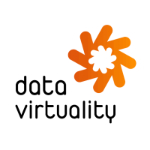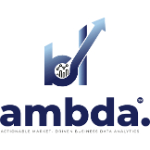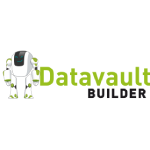List of Best Data Warehouse Software
Showing 10 of 20 productsAppsTec DMS, a powerful document management system designed to revolutionize the way businesses handle their digital assets. With its user-friendly interface features, AppsTec DMS streamlines the process of organizing, storing, and sharing documents,...Read AppsTec DMS Reviews
Data Virtuality LDW is a data integration software that seamlessly connects all your data sources, delivering real-time insights and empowering better decision-making. With its advanced capabilities and user-friendly interface, Data Virtuality LDW st...Read Data Virtuality LDW Reviews
Incorta, the innovative software that revolutionizes business intelligence and data analytics. With its advanced technology and user-friendly interface, Incorta provides powerful and streamlined solutions for data integration, analysis, and visualiza...Read Incorta Reviews
Funnel is a tool for streamlining your sales and marketing process. This powerful software combines user-friendly design with advanced features to help your business reach new heights. Say goodbye to manual data entry and hello to efficient funnel au...Read Funnel Reviews
AMBDA is a software that streamlines and simplifies your business analytics process. Say goodbye to tedious manual data analysis, and hello to efficient insights and decision making. With AMBDA, harness the power of data to drive your business forwar...Read AMBDA Reviews
XiRAID is a robust data protection software designed to safeguard your valuable information. With its advanced technology and user-friendly interface, it ensures that your data is always secure and easily accessible. Whether for personal or business...Read xiRAID Reviews
WhereScape RED is a data warehouse automation software that streamlines the process of building, managing, and updating data warehouses. With its user-friendly interface and powerful capabilities, WhereScape RED revolutionizes data warehousing by sav...Read WhereScape RED Reviews
Datavault Builder your ultimate solution for simplified is a data warehousing. Designed to streamline the process of creating and managing data vaults, this innovative software empowers businesses to store and access large amounts of data with ease...Read Datavault Builder Reviews
Snowflake is a advanced and innovative software that revolutionizes data management. With its unparalleled efficiency and flexibility, Snowflake provides a seamless experience for data storage, processing, and analysis. Experience the future of data...Read Snowflake Reviews
NetApp is a leading storage and data management company that has been revolutionizing the IT industry since its establishment in 1992. With a focus on innovation and customer satisfaction, NetApp offers a wide range of solutions for businesses of all...Read NetApp Reviews
- What Is Data Warehouse Software?
- Top Reasons Why Businesses Need Data Warehouse Software?
- What Are the Top Key Features of Data Warehouse Software?
- What Are the Top Benefits of Data Warehouse Software?
- What Are the Steps to Choose the Right Data Warehouse Software?
- What Are the Types of Data Warehouse Software for Different Industries?
- What Are the Technology Trends for Best Data Warehouse Software?
- What Are the Deployment Options for Data Warehouse Software?
What Is Data Warehouse Software?
A data warehouse software application is a programme that stores, organises, and manages massive amounts of data. This information may come from a variety of sources, including operating systems, external feeds, online logs, and internal sources. Companies can use the software to create an information centre with integrated data from many sources.
Cloud data warehouse tools can also be used as a strategic tool to track and analyse the dynamics of corporate performance over time. Data warehouse management software assists organisations in centrally storing and analysing data to improve efficiency and accuracy.
Data warehouse management tools enables users to organise organised, unstructured, or semi-structured data such as texts, photos, audio, and videos. DWH tools with these characteristics can also assist firms in identifying potential consumers and sales patterns. It can also be utilised to learn about customer patterns and purchasing behaviours.
Finally, the best data warehouse tools offer business analytics services that assist firms in making data-driven decisions. This provides organisations with insights and understanding that can be used to improve their performance and competitive advantage.
Top Reasons Why Businesses Need Data Warehouse Software?
1. The best data warehouse tools help enterprises to effortlessly access and analyse massive datasets from a variety of sources, including legacy systems, ERP systems, transactional databases, spreadsheets, and third-party apps.
2. DWH tools enables automated data quality integrity checks.
3. The best data warehouse software offers a comprehensive perspective of many sorts of data, including structured and unstructured data.
4. Cloud data warehouse tools enables firms to generate sophisticated queries and reports rapidly.
5. Data warehouse management software helps firms understand their customers, goods, services, and other business operations.
6. Data warehouse management system assists in making data-driven business decisions.
7. It expedites data analysis and reporting.
8. It makes data storage and retrieval easier.
9. Data warehouse management tools provides predictive analytics, which enables organizations to forecast future trends.
10. The best data warehouse tools assists organizations in meeting data security and privacy standards.
11. Data warehouse management system is compatible with existing analytics and reporting solutions.
12. Data warehouse management software aids in data mining by detecting correlations between various variables.
13. Cloud data warehouse tools aids forecasting by using predictive modelling approaches.
14. The best data warehouse tools gives businesses a consolidated picture of all data, allowing them to immediately discover patterns and trends.
15. DWH tools assists firms in understanding the cause and effect of many variables on business performance.
What Are the Top Key Features of Data Warehouse Software?
1. Data cleaning: Data warehouse software can assist in cleaning up data sets from several sources by removing inconsistencies, filling in missing values, and ensuring data from different sources is consistent with one another.
2. Data integration: DWH tools enable the integration of many data sources into a single coherent system. This enables organizations to acquire a more precise and comprehensive understanding of their data.
3. Data warehouse architecture: Virtualization, data marts, OLAP cubes, and dimension files are all parts of a well-designed data warehouse architecture that are supported by modern data warehouse management tools to enable optimal data warehouse performance.
4. Data mapping: The best data warehouse tools can map data from various sources into consistent forms and structures, making larger-scale data analytics easier.
5. Security: Cloud data warehouse tools can ensure that data is stored securely and encrypted to prevent data breaches or misuse.
6. Data modeling: The best data warehouse software can create high-level data models that aid in the visualization of data and the links between different types of data housed in the warehouse.
7. Optimization: Data warehouse management software can assist in identifying and removing obsolete or surplus data from the warehouse.
8. Business intelligence: Organisations can use data warehouse software to execute a variety of business intelligence functions such as in-depth analysis, data mining, dashboards, and reporting.
9. Performance analytics: Performance analytics functions such as scorecards, analytics, and benchmarking can be aided by data warehouse management tools.
10. Scalability: DWH tools software can scale to meet organisational needs and expand as additional data is added. This allows organisations to devote more time and energy to data analysis rather than data management.
What Are the Top Benefits of Data Warehouse Software?
1. Access to accurate and up-to-date information: The best data warehouse software helps organization's quickly access accurate and up-to-date data, which helps them make informed decisions.
2. Enables Data Consolidation and Normalization: Top data warehouse software helps organizations to consolidate data from dissimilar sources and normalize it according to business requirements. This helps organizations to get better insights from their data.
3. Improved Data Quality: Data Warehouse Software provides advanced data scrubbing and transformation capabilities, which help to ensure high quality data.
4. Streamlined Business Processes: Data Warehouse Software offers efficient data-driven and automated processes, which help to improve organizational efficiency and enhance customer experience.
5. Enhanced Analytical Capabilities: Top data warehouse software supports advanced analytics, which helps to provide deeper insights into business operations and strategies.
6. Improved Business Intelligence: Data Warehouse Software enables organizations to gain greater insights into customer preferences, trends and behavior, which can be beneficial in decision making.
7. Improved Decision Making: Top data warehouse software helps organizations to make better decisions, as it provides them access to timely data and helps to maintain accuracy and transparency in decision making.
8. Reduced IT Cost: Data warehouse management software helps to reduce IT costs as it automates the data loading and transformation processes, eliminating manual intervention.
9. Real-time Monitoring: The best data warehouse software helps organizations to monitor their data in real-time, which helps to identify opportunities, resolve issues quickly, and ensure accurate and timely reporting.
What Are the Steps to Choose the Right Data Warehouse Software?
1. Identify your data sources: Before shopping for data warehouse solutions, the first step should always be to identify the data sources. Determine the most critical data sources and take note of any size, format, or speed limits.
2. Determine the needs of your business: Take the time to study and analyse the company's existing and future demands. Consider both short-term and long-term objectives for the data warehouse solution.
3. Choose the right technology: Decide on the technology that would best fulfil the demands after identifying the data sources and needs. Make sure to thoroughly examine the offerings of multiple providers, paying special attention to vendor support and scalability.
4. Develop a budget: Create a budget for the data warehouse software once the technology has been decided. Compare and contrast the prices of several options to ensure you're receiving the greatest deal.
5. Evaluate the software suitability: Following the selection of most popular data warehouse software and budget, test the programme to confirm that it fits the defined needs. Thoroughly test the system to ensure that it operates as planned and is compatible with existing systems.
6. Select the software: After testing the top data warehouse software, make a final selection on the best solution. This could contain a mix of vendors or solutions to fulfil the demands of the organisation.
7. Execute a successful implementation: Following the selection of software, the implementation will take place. Keep track of progress and keep the team focused on the initial goals.
Staying one step ahead of the learning curve and addressing any bottlenecks that occur are examples of this. When the right data warehouse software is properly integrated, the entire organisation will benefit from better data accessibility and scalability. Keeping these seven stages in mind will help you make the best decision.
What Are the Types of Data Warehouse Software for Different Industries?
Data warehouse software makes it easier for businesses to store and analyze large amounts of data that is used to make better decisions and optimize profits.
The types of data warehouse software that are available for different industries include:
1. Relational Database Management System (RDBMS): RDBMSs are the most often used Data warehouse management software in a wide range of industries. They are simple to use, secure, and can handle very huge databases.
2. In-Memory Analytics Platforms: These platforms deliver quick results by storing data in RAM rather than a typical database. These are frequently utilised in industries that require immediate information, such as retail and healthcare.
3. Data Warehouse Automation (DWA): DWA is a cloud-based platform that automates data warehouse design, deployment, and maintenance components. These are frequently employed in businesses that require rapid deployment and access to massive databases.
4. Hadoop: This open-source programme is built on a networked architecture, making it appropriate for big data management. It is frequently utilised in analytics projects across a wide range of industries, including banking and healthcare.
5. NoSQL Databases: NoSQL databases are designed to manage very massive datasets and can scale across computer clusters. These are frequently employed in businesses requiring quick access to huge datasets, such as insurance and telecommunications.
What Are the Technology Trends for Best Data Warehouse Software?
The technology trends in data warehouse software continue to evolve and develop. This reflects the continual need for data managers and analysts to access data easily and consistently.
The following are the key trends for best data warehouse software:
1. Cloud-based data warehouses: Because of the cost reductions, scalability, and availability of cloud services, more data warehouses are migrating to cloud-based systems. Data analysts can easily access and securely store data without requiring physical infrastructure or administrative expenses.
2. Big data analytics: Large data sets and more complex analytical processes necessitate the usage of a strong data warehouse management system. Companies are investing in big data analytics systems that can manage massive amounts of data in a timely and dependable manner.
3. Self-service analytics: Self-service solutions are popular with analytic teams that need data rapidly to make judgments. Data warehouse software is increasingly being developed with self-service features to provide data to analysts.
4. Real-time analytics: Companies are investing in data warehousing technologies that can react to changing business situations fast. Businesses that use real-time analytics can adapt to market conditions fast and with few or no intermediary procedures.
5. Automation: Automation features included into data warehouse software can help with data management and analysis. Automation features can aid in the reduction of errors, the acceleration of operations, and the creation of more detailed reports for company decision-makers.
What Are the Deployment Options for Data Warehouse Software?
Options for Data Warehouse Software Deployment On-premise and cloud-based deployments are the two primary deployment choices for Data Warehouse software.
1. On-premise deployments include hardware and software that is installed and controlled on the organization's own computer systems. The data warehouse software is maintained by the company's own IT personnel and necessitates the acquisition of hardware and software licences.
This is frequently the most expensive option, and it carries higher risks, such as requiring more time, resources, and experience to install, configure, secure, and manage the programme.
2. Cloud service providers such as Amazon Web Services, Microsoft Azure, and Google Cloud Platform are used in cloud-based deployments. These solutions are frequently less expensive than on-premise deployments, but they also rely on the provider's computing capabilities and require far less configuration and upkeep.
Data warehouse management system can also be accessed from anywhere in the globe via the public internet. Before selecting a cloud service, it is critical to understand the provider's security procedures. Regardless of deployment method, Data Warehouse Software must be configured to match the needs of the organisation.
Before making a final decision, organisations should undertake experiments to examine the various deployment solutions for their problem.










